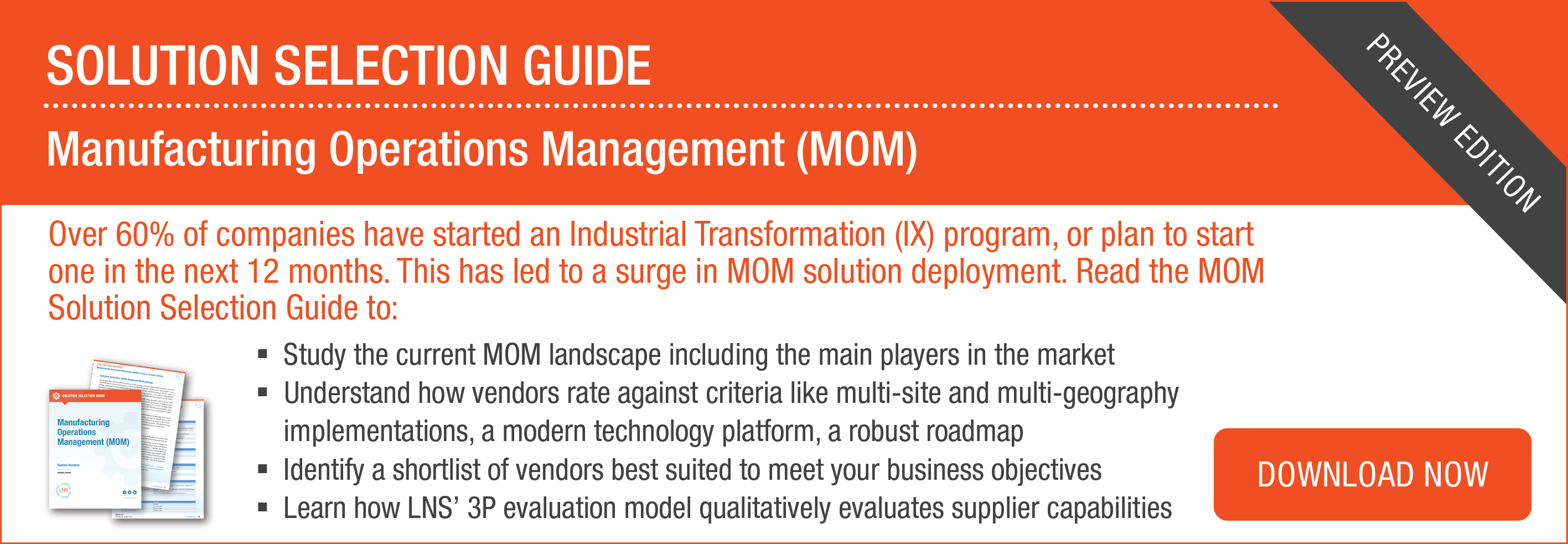Product recalls. Supplier quality issues. Increasing customer demands. For manufacturers, these are all problems that can quickly pop up and throw a huge wrench in the operational gears, significantly impacting the bottom line. Dealing with them efficiently and effectively is key to keeping operations running smoothly and customers happy.
But before you can address a particular problem, you need to have the visibility to identify it and isolate it from the rest of healthy operations, and this is why market-leading companies today are focusing on end-to-end product traceability.
Regardless of your industry, improved product traceability is important in enabling better customer response and handling operational issues quickly and effectively. In this post, we’ll explain three important ways to get started.
What Does End-to-End Really Mean?
First, let's quickly define "end-to-end." When we say “end-to-end,” we're talking about the ability to track information on all components or raw materials and associated processes across the value chain, including the design, engineering, supply, manufacturing, delivery, and service phases.
Why is this so important? Well, it’s a crucial ability for quickly and effectively investigating customer complaints and managing potential product recalls, which speaks directly back to improved quality and product consistency. Additionally, it helps in identifying any root causes of defective products so they can be isolated/contained and any identifying supplier issues so they can be dealt with.
It's often the case that this chain of traceability breaks down within the complexities of manufacturing processes, which is why it's so important to focus on this particular area of the value chain.
1.) Carefully evaluate your current process and software capabilities and decide where you need to improve
In order to achieve end-to-end product traceability, the most important and obvious step is to ensure you have the technology and process capabilities to make it a reality. A good place to start is to establish common goals and objectives across multiple departments and all relevant stakeholders within. It's important for these people to be armed with the same data, information, and key performance indicators (KPIs) for success.
But another thing you're going to want to consider heavily (if you haven't already) is implementing Manufacturing Operations Management (MOM) software applications like production execution and workflow software to track all production activities, materials, and product characteristics.
In our 2013-2014 MOM survey, which has been taken by over 350 respondents, we glimpse a view of current end-to-end traceability capabilities within manufacturing operations. Looking at the graph below, you'll see only 23% of respondents had traceability processes and software. However, taking that into account, within a year, we see around 60% stated they will have some type of software and/or process for traceability. This is a clear indication of the growing importance of product traceability in the customer’s eyes.

2.) Consider approaching your traceability initiative at the enterprise level, as an extension of your system of record
While you may have product lines that compose a significantly larger portion of your business than others, it’s nonetheless important to take a high-level view of this initiative to ensure you’re serving customers to the fullest and staying competitive in your industry.
Your product composition or customer base may evolve over time, and taking an enterprise-wide approach ensures long-term success. Depending on your IT architecture this can be set up in a number of ways, either by integrating with a single ERP or PLM system. If your company lacks a single system of record, a new enterprise platform approach to traceability may be worth exploring.
3.) Remember traceability capabilities require varying levels of technology support unique to the situation
Be cognizant of the fact that the best technology strategy for you may include a single or—more likely—multiple separate MOM applications. Several MOM applications play an important role in facilitating end-to-end product traceability. According to research data, companies that have the process and software capabilities to handle end-to-end product visibility typically have multiple applications deployed to support this initiative.
Looking below, you can see production execution software topping the list at 69%, followed by Quality Management (64%), Asset Management (46%), Historian (46%), and Workflow (40%). The level of adoption of these applications speaks to the complexities and difficulty to be navigated in achieving full end-to-end product traceability.

Building Your Own End-to-End Traceability Capabilities
Achieving end-to-end product traceability is a lofty goal that isn’t achieved overnight. In addition to these three beginning steps, it’s important to perform your due diligence around appropriate programs and processes characteristics as well as to select MOM software vendors that fit your industry needs and have a proven track record of solving complex, enterprise-wide product traceability challenges. To learn more about 20 of the top vendors in the MOM space and strengths in traceability capabilities, click below for a free copy of the LNS Research MOM Solution Selection Guide.
